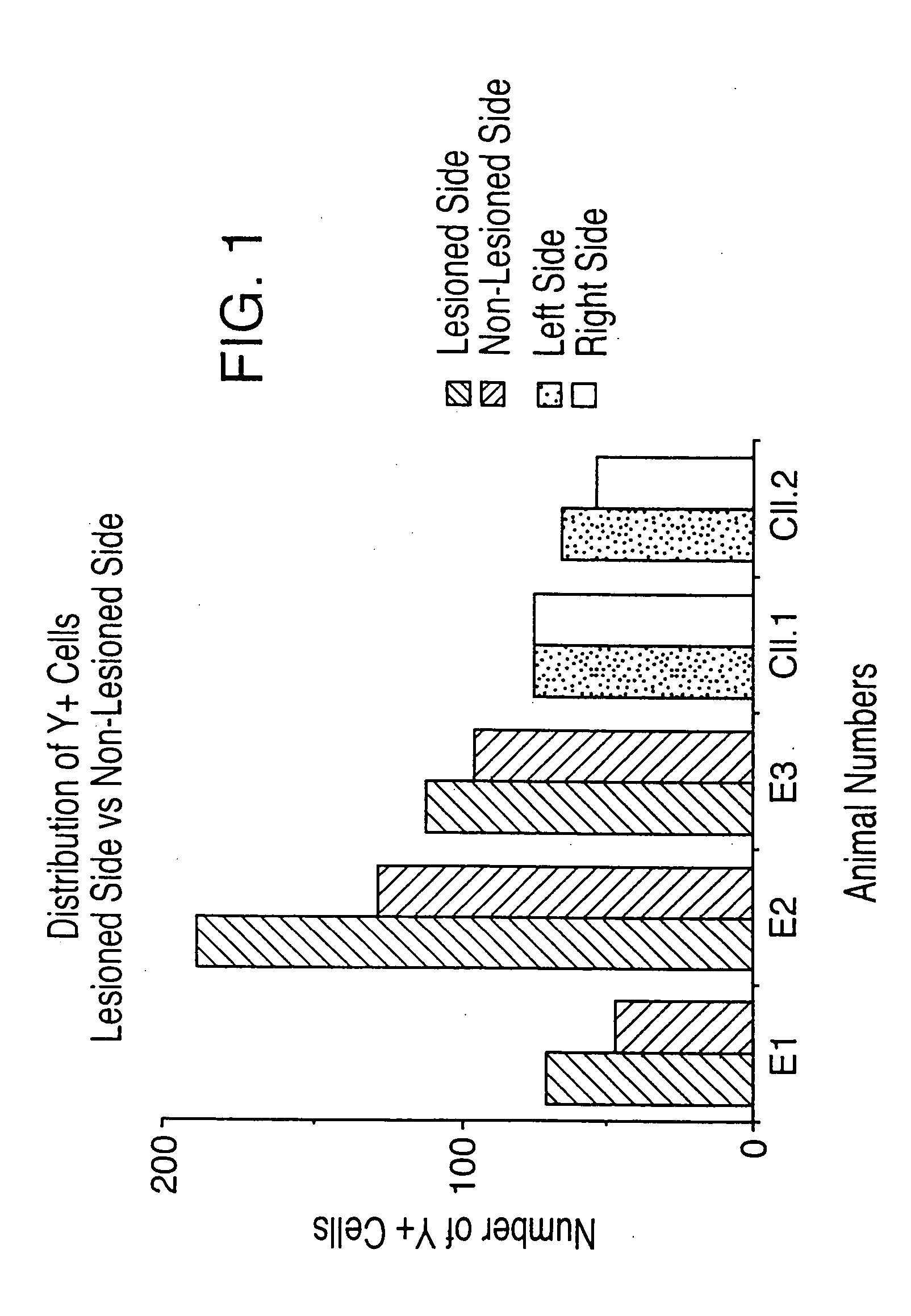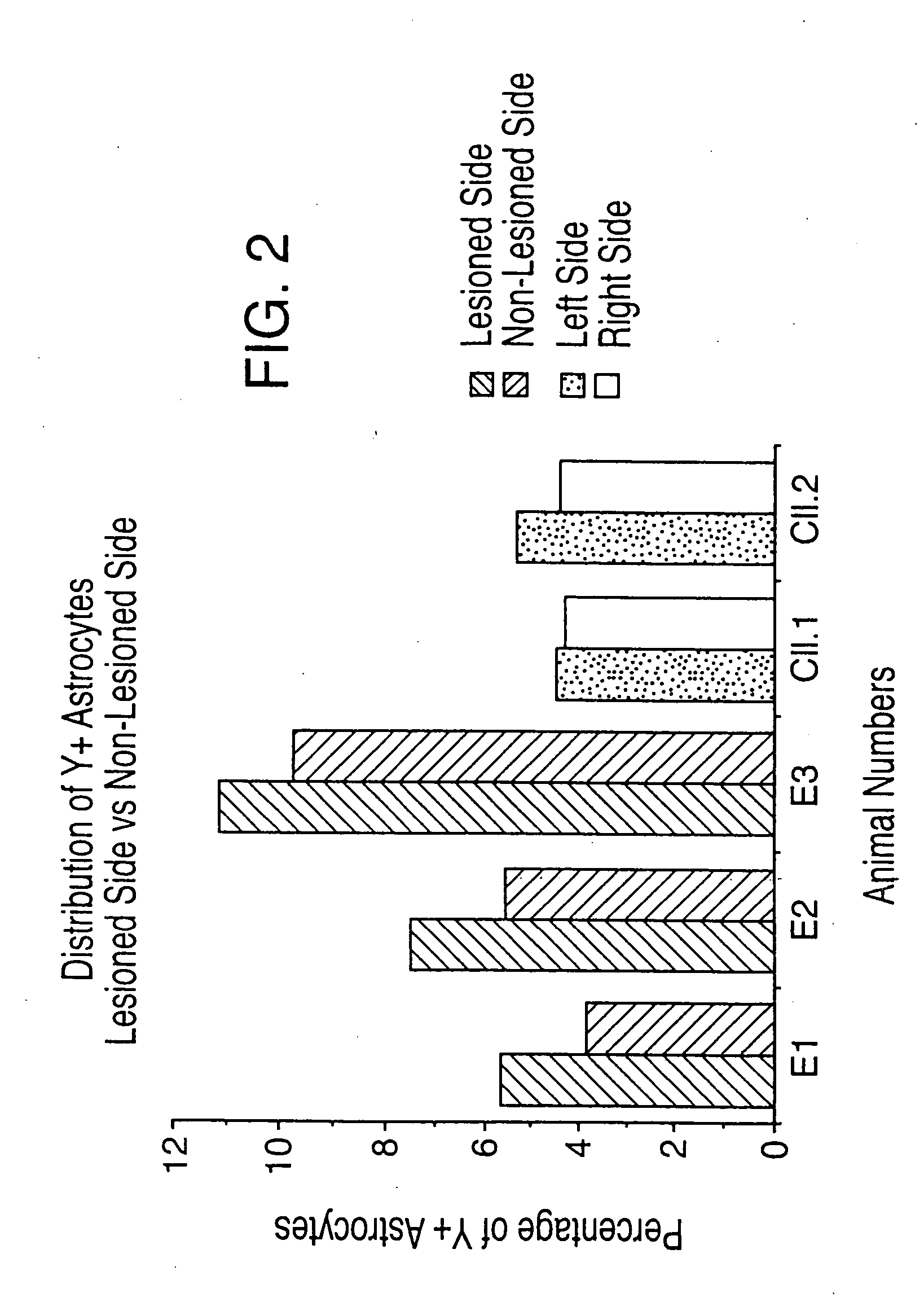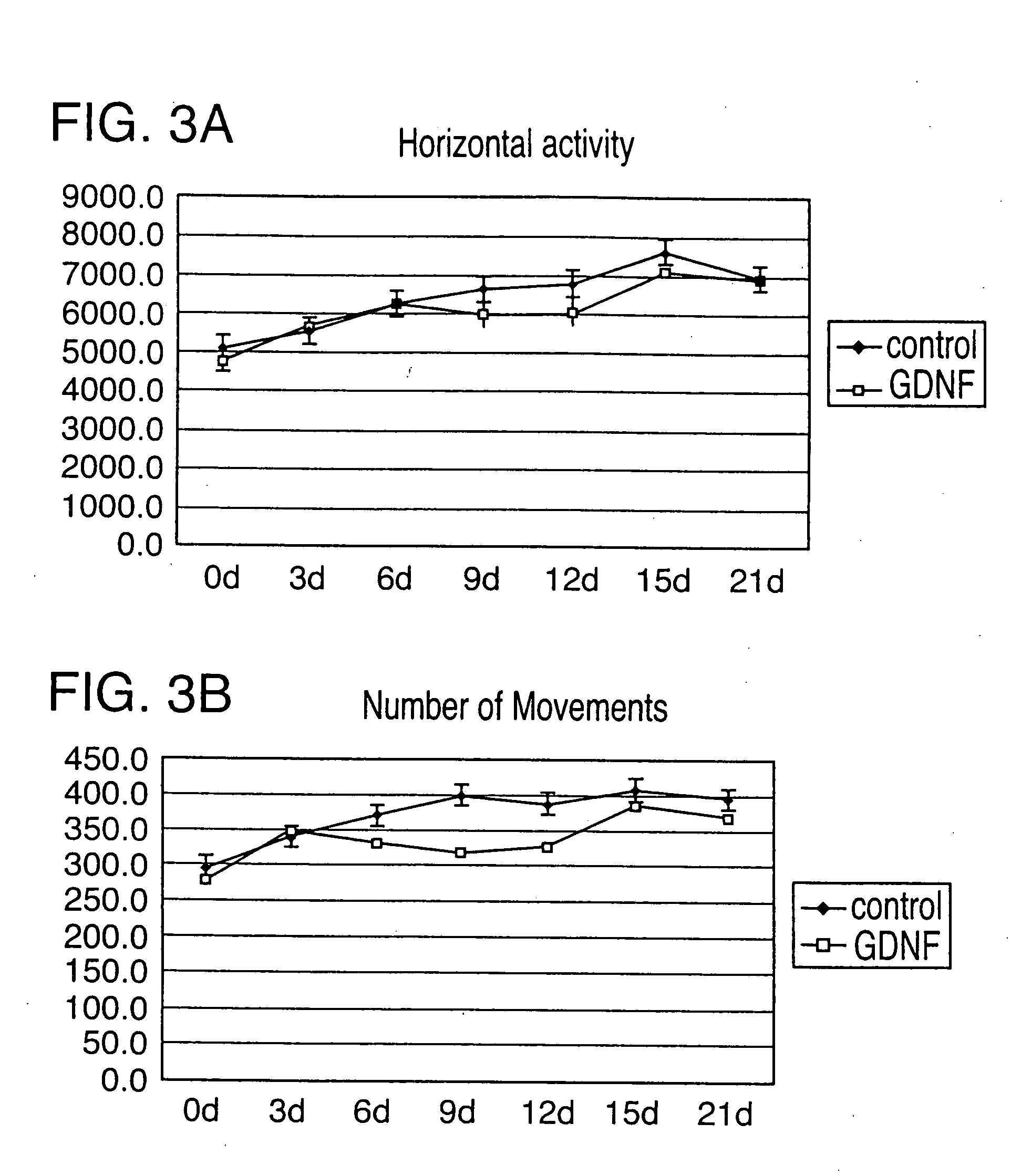Use of marrow-derived glial progenitor cells as gene delivery vehicles into the central nervous system
a technology of marrow-derived glial progenitor cells and central nervous system, which is applied in the direction of cell culture active agents, blood/immune system cells, viruses, etc., can solve the problems of glia in adult brains and the debatable origin of microglia, and achieve the effect of greater therapeutic precision
- Summary
- Abstract
- Description
- Claims
- Application Information
AI Technical Summary
Benefits of technology
Problems solved by technology
Method used
Image
Examples
experiment 1
Gene Transfer and Bone Marrow Transplantation
[0020] Gene transfer into hematopoietic precursors was done as previously described (11, 12), with the addition of stem cell factor to optimize transduction of reconstituting hematopoietic stem cells (13). C57BL / 6J mice (Jackson Laboratories, Bar Harbor, Me.), 6-8 weeks old, were used as donors. Forty-eight hours before marrow harvest, the mice were injected with 5-fluorouracil at a dose of 150 mg / kg to ablate mature blood cells and thereby induce progenitor cells into cycle. Upon harvest, marrow was placed into liquid culture in suspension dishes and grown in Dulbecco's modified Eagle's medium containing 15% fetal bovine serum (Whittaker Bioproducts, Walkersville, Md.) and supplemented with IL-3 (50 ng / ml), IL-6 (100 ng / ml) and stem cell factor (100 ng / ml). Growth factors were used to maintain early hematopoietic cells in cycle (13). All were obtained from R & D Systems (Minneapolis, Minn.). After 48 hr in culture with growth factors, m...
experiment 2
In situ Hybridization Histochemistry
[0023] Tissues were evaluated with both oligonucleotide and RNA probes. To detect neo R transcripts, two oligonucleotide probes were prepared, complementary to the sequence of the neoR gene either from nucleotides 222-269 or from nucleotides 447-494 (numbering with the A of the initiation codon as 1). The oligonucleotides were labeled using terminal transferase (Boehringer-Mannheim, Indianapolis, Ind.) and 35S-dATP (New England Nuclear, Boston, Mass.) as described previously (16). An RNA probe, complementary to the entire neoR coding region, was labeled with 35S-UTP using SP6 polymerase (17). Labeling with radioactive probes was detected by dipping hybridized sections in photographic emulsion. Emulsion was exposed for 14 days, then developed and sections were stained, air dried, and coverslipped for microscopic examination. To detect male bone marrow cells transplanted into female recipients, sequences specific to the donor mouse Y chromosome wer...
experiment 3
[0025] To confirm that Y chromosome ISHH coincided with cell nuclei, sections were counterstained with ethidium bromide or 4′,6-diamidino-2-phenylindole (DAPI). Staining was detected by illumination with a mercury lamp using a microscope equipped for fluorescence micrography.
PUM
| Property | Measurement | Unit |
|---|---|---|
| pH | aaaaa | aaaaa |
| time | aaaaa | aaaaa |
| time | aaaaa | aaaaa |
Abstract
Description
Claims
Application Information
 Login to View More
Login to View More - R&D
- Intellectual Property
- Life Sciences
- Materials
- Tech Scout
- Unparalleled Data Quality
- Higher Quality Content
- 60% Fewer Hallucinations
Browse by: Latest US Patents, China's latest patents, Technical Efficacy Thesaurus, Application Domain, Technology Topic, Popular Technical Reports.
© 2025 PatSnap. All rights reserved.Legal|Privacy policy|Modern Slavery Act Transparency Statement|Sitemap|About US| Contact US: help@patsnap.com



